Table of Contents Show
If you plan to use your RV during winter, you don’t want to trust just any old travel trailer.
We’ve found some of the best cold-weather travel trailers to help you stay cozy all season.
Surviving winter in an RV can be challenging, but you can look for a few things when shopping to set you up for success.
We don’t want you just to survive a winter in your RV but thrive. Let’s get started!
Can You Live in a Travel Trailer in the Winter?
Yes, you can live in a travel trailer in the winter, and many people do. However, your comfort will greatly depend on the model and what cold weather features the manufacturer offers.
Most manufacturers design their rigs for recreational purposes, which is during peak camping seasons for most RV owners. Meaning most RVs are designed for the summer and fall months.
But if you’re looking for an RV that can take on those winter months, we’ve got you covered. First, let’s review a few key features to pay attention to when shopping around.
What to Look for in a Cold Weather Travel Trailer
When shopping for a cold-weather travel trailer, it’s important to look for several things. The features listed below will help you stay warm and cozy all winter long.
Insulation Rating
RV insulation uses different “R values” for the insulation rating. The higher the R-value, the better your RV will be insulated.
A typical RV sidewall will have an insulating rating between R-5 and R-7. However, you don’t want just a typical RV if you plan to live in it during the winter.
An RV with a four-season rating will have beefed-up insulation. It’ll usually have an R-9 rating for sidewalls, an R-11 for the underbelly, and an R-40 for the roof and front wall. You’ll appreciate having more insulation between you and frigid temperatures!
It’s important to note that these insulation numbers are not the same as the insulation you will find in your home. Plenty of RV manufacturers will layer their insulation numbers, which is a tricky way to beef up the R-value.
For example, an RV might have a layer of Reflectix in the underbelly that has an R-5 value, then a layer of insulation that has an R-10 value, then another layer of Reflectix. This would be advertised as the underbelly having an R-20, but in reality, it’s three separate pieces of insulation.
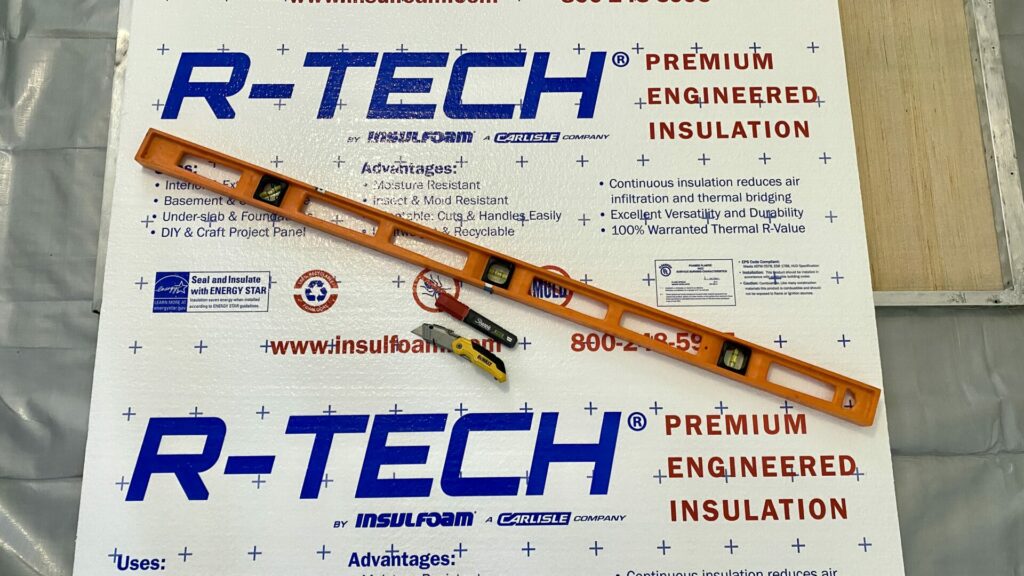
Thermal Dual-Pane Windows
The next feature you’re going to want to look for is dual-pane windows. The windows on an RV can let in a tremendous amount of cold air from the outside.
Manufacturers who want to create an RV that can handle weather conditions will use thermal dual-pane windows. These weigh more and cost more, but they do a great job insulating the rig.
Many RVers enjoy dual-thermal pane windows because they prevent condensation. The inside of your RV windows will sweat when the inside temperature is warmer than the outside.
Luckily, with thermal dual-pane windows, you don’t have to worry about condensation inside your windows.
Pro Tip: While dual-pane windows are great, they can get foggy. Here’s How to Repair Your Foggy RV Window if you have them!
Heating System
Obviously, you’ll need some heat sources while you live in your travel trailer during the winter. Many RVs have a propane furnace that pumps heat through vents running throughout their rig.
Additionally, some RVs come with electric fireplaces in the living room or bedrooms. However, they use a lot of power, so they aren’t ideal if you’re boondocking or paying for electrical in a long-term campsite.
Lastly, you can supplement your heat source with a portable heater. We highly recommend reading The Best RV Propane Heaters to Keep You Warm if you’re going to go this route.
Heated Underbelly Enclosure
The best cold weather travel trailers will have a heated underbelly. This means the RV’s heating system will have a vent or two that blows warm air from the furnace to the underbelly. This will protect sensitive water lines, plumbing equipment, and other items that can’t be exposed to cold weather.
It may not keep the temperature as warm as the living space, but it can often keep it above freezing to help avoid potential damage.
If you have an RV with a heated underbelly, you want to run your furnace regularly. No warm air gets pumped into your underbelly if the furnace isn’t running.
Many RVers make the mistake of running their electric fireplace or space heaters so much that their furnace doesn’t kick on regularly. With no warm air pumped into the underbelly, water lines and other components can freeze.
Learn More: Love discovering awesome products? Here is some Camping Gear for Cold Weather You’ll Actually Love!
Heated Holding Tanks
If your RV’s holding tanks freeze, you won’t have a way to empty them. Travel trailers built for cold weather will always come with heated holding tanks.
Manufacturers wrap tanks with an electric-blanket type device that RVers can turn on with the flick of a switch. The blankets will warm the tanks enough so the liquids inside don’t freeze.
Many of these heaters will turn off once the conditions change and are no longer necessary.
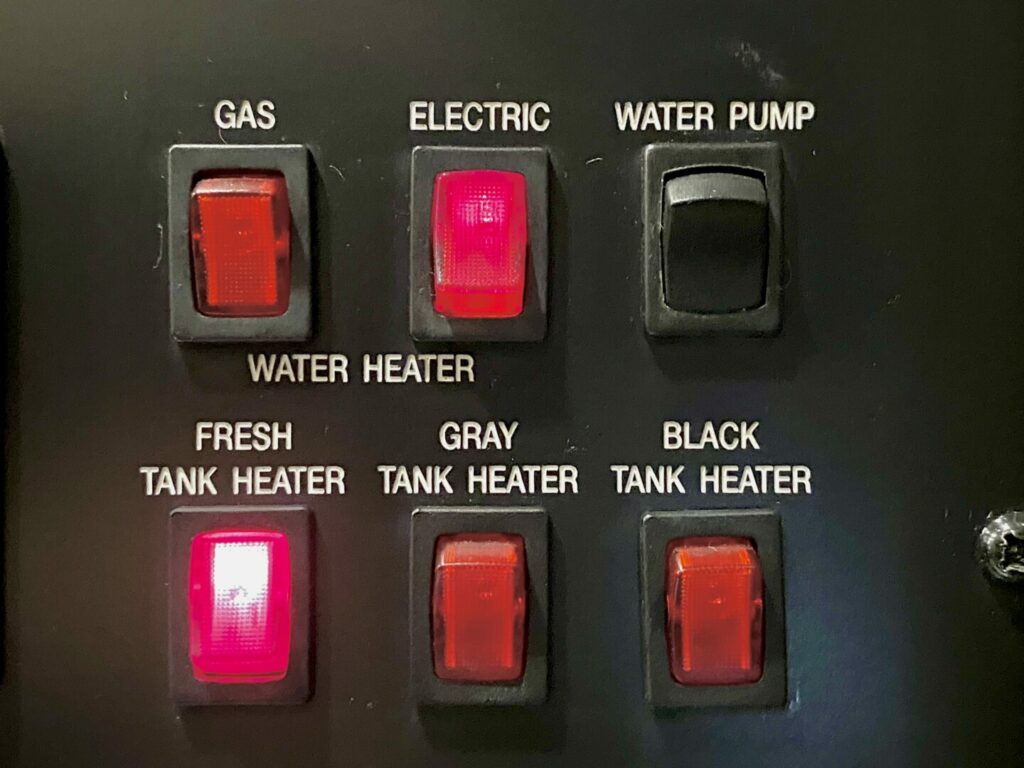
Best Cold Weather Travel Trailers to Survive Winter
Now that you know what to look for in a cold weather travel trailer, let’s look at some of the best on the market.
Lance 2285 Travel Trailer
MSRP: $74,073
Length: 27 feet 5 inches
GVWR: 8,000 pounds
Cold Weather Features: The Lance 2285 Travel Trailer comes with Lance’s all-weather package. This includes ducted heating with vents to the enclosed underbelly to protect your RV’s sensitive components.
Lance also has a simple-to-use water heater bypass that can allow you to winterize your rig easily. It comes with insulated hatch covers to help limit the loss of warm air through the roof vents.
About: The Lance 2285 comes with a 45-gallon fresh tank, two 40-gallon gray tanks, and a 40-gallon black tank. You’ll have plenty of tank space to store water and waste while you brave the elements.
With a 2,225-pound cargo-carrying capacity, you’ll have plenty of room for just about anything you’d want to bring.
It has a ton of floor space and multiple doors to allow guests to come and go. Just because you’re living in a travel trailer during the winter doesn’t mean you can’t host your friends and family.
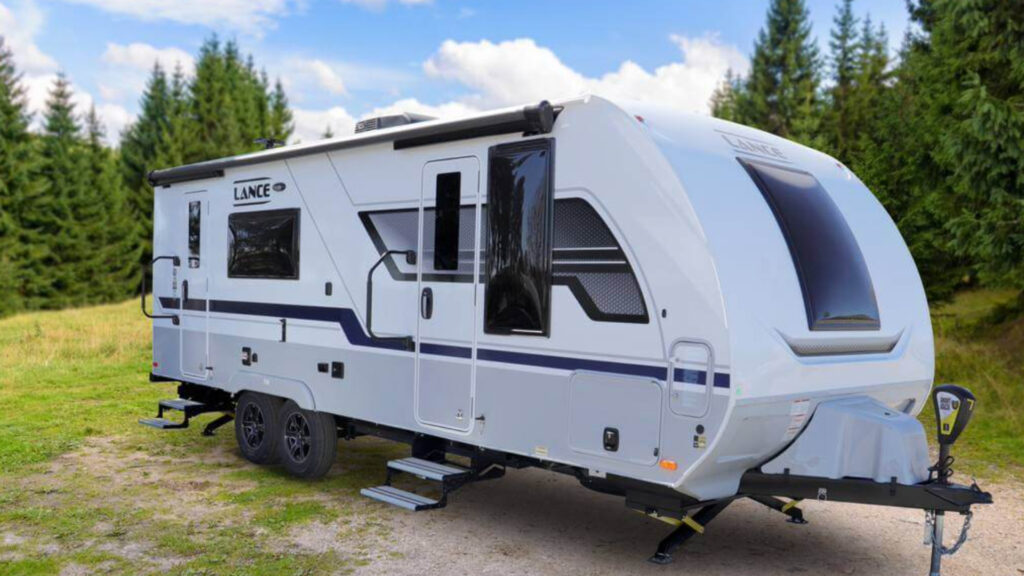
Arctic Fox North Fork 29RK
MSRP: $88,900
Length: 32 feet 3 inches
GVWR: 10,400 pounds
Cold Weather Features: The Arctic Fox North Fork 29RK is built for four seasons. You may appreciate the fully enclosed holding tank area that circulates warm air around the tanks to keep them from freezing.
Additionally, the dump valves are enclosed in the heated space to help prevent any potential damage from frigid temperatures.
About: The 29RK is a quality rig made by a reputable manufacturer of four-season RVs. The 58-gallon fresh water, 35-gallon gray water, and 35-gallon black water tanks are all insulated with thermal heat pads.
You can know your tanks are safe from the elements with the flick of a switch. Additionally, Northwood has a reputation for having the highest quality RV frames in the industry that can take a beating.
Keep in Mind: Arctic Fox offers a variety of campers! That’s why we created an Arctic Fox Camper Buying Guide to help you decide on the right camper for your needs!
Northwood Nash 24B
MSRP: $46,391
Length: 28 feet 8 inches
GVWR: 9,200 pounds
Cold Weather Features: Another one of the best cold weather travel trailers to survive winter is the Northwood Nash 24B. It has all the winter camping features a family could need to stay comfortable.
The insulated and heated holding tanks will keep your tanks and underbelly warm during frigid temperatures. Northwood uses high-quality batten and reflective-foil insulation during construction to help beef up the insulation of its units.
About: The Nash 24B travel trailer works great for families. It includes double bunks with privacy curtains.
Additionally, the fiberglass exterior and high-density block foam insulation help provide a barrier between you and Old Man Winter. You can easily keep your rig warm in the winter and cool in the summer.
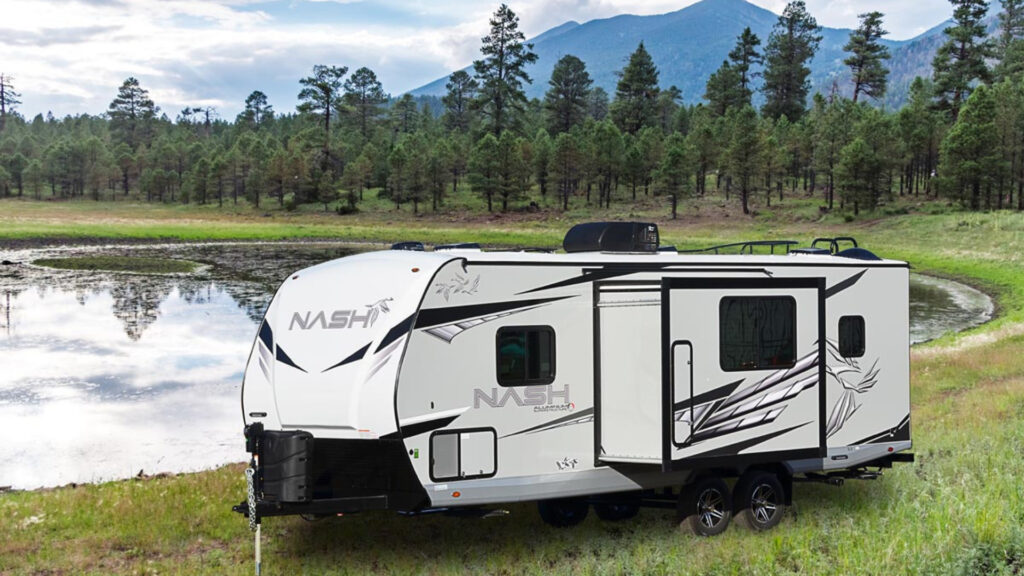
Jayco Eagle 330RSTS
MSRP: $75,218
Length: 40 feet 1 inch
GVWR: 11,995 pounds
Cold Weather Features: The Eagle has a fully enclosed and heated underbelly. Additionally, it has double-sided radiant insulation in the roof, floor, and front cap.
Combine those with the double-layer fiberglass batt insulation in the ceiling and floor, and you’ve got a well-insulated rig ready for winter.
About: If you’re tired of stale and boring interiors from RV manufacturers, the 330RSTS is one you might want to consider. It has a fresh, bright white interior that looks like it came from a farmhouse.
The fresh colors provide a very residential look inside. However, if you prefer traditional colors, Jayco continues to offer this option. The Eagle line is one of the market’s longest-running and most successful RVs.
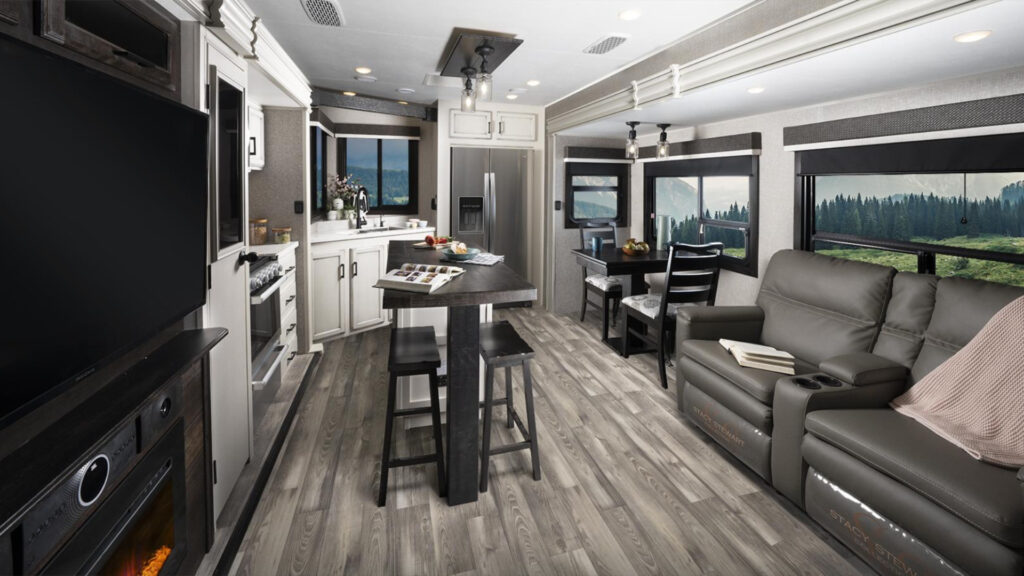
Bigfoot Travel Trailer B25
MSRP: $71,425
Length: 25 feet 6 inches
GVWR: 7,500 pounds
Cold Weather Features: Bigfoot Travel Trailers all use a two-piece fiberglass exterior. High-density insulation and thermal pane windows help make the Bigfoot B25 one of the most capable and comfortable cold-weather travel trailers available.
About: Bigfoot creates an RV capable of withstanding the elements to keep you comfortable.
Simple things like a porcelain toilet, spring-filled mattress, and deluxe fabrics on the furniture will have you forgetting you’re in an RV.
Heartland Sundance Ultra-Lite 262RB
MSRP: $50,177
Length: 30 feet 10 inches
GVWR: 7,780 pounds
Cold Weather Features: With the 2-inch furnace ducts blowing warm air into the enclosed and insulated underbelly, you won’t have to worry about frozen water lines or your sensitive plumbing.
Heartland uses Azdel laminated sidewalls that help create an additional barrier between the inside of your RV and the cold winter conditions. You’ll stay warm and toasty in this cold weather travel trailer.
About: One of the first things you’ll notice when you walk in is the massive ceilings. The vaulted ceilings provide plenty of headspace for even the tallest of RVers.
Turn on the electric fireplace and grab a seat at the dinette as you watch the snow fall outside. The queen-size bed includes an upgraded mattress to help you get a good night’s sleep. However, many people love the lack of carpet.
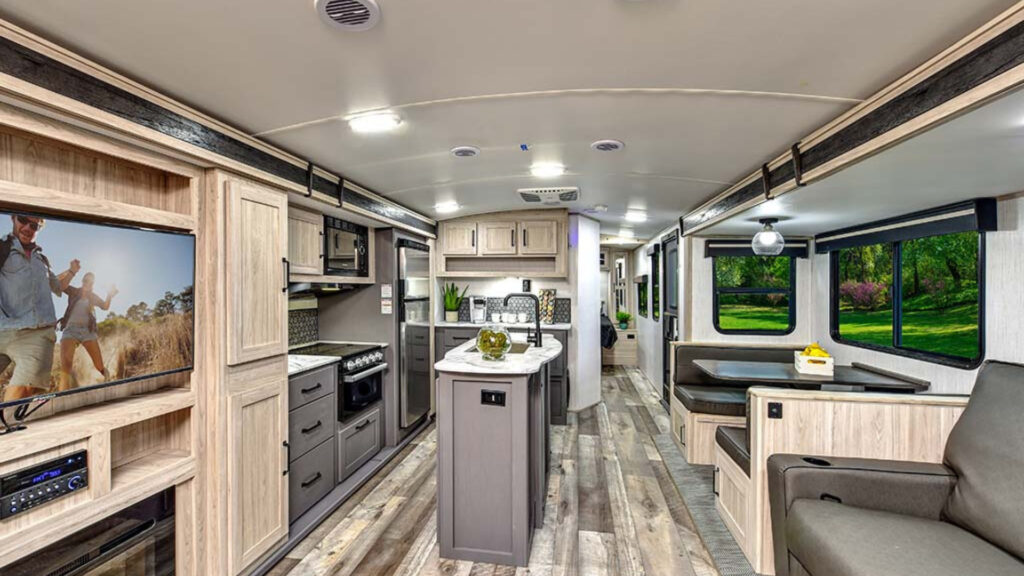
Pro Tip: Heartland offers some of our favorite RV floorplans. To learn more about this brand and what it offer, be sure to read Who Makes Heartland RV?
Additional Tips For Cold Weather Camping
Taking the time to prepare your RV for winter will be the key to surviving the chilly weather.
Before the temperatures start to dip, buy a heated water hose. This will ensure your water hose doesn’t freeze and that you have water in your RV even when the temperatures drop below freezing.
We also recommend installing RV skirting to help prevent the cold wind from blowing under your rig.
You can create your skirting using pieces of insulation board for a couple of hundred dollars or buy custom options for a couple of thousand. You can find pre-made options that fall in between those prices.
Again, the key to surviving winter is the work you spend before the temperatures drop. You don’t want to wait for the snow to start planning how you’ll protect yourself and your RV from the cold.
If you do the work in advance, you can sit inside your warm RV when those cooler temperatures finally arrive.
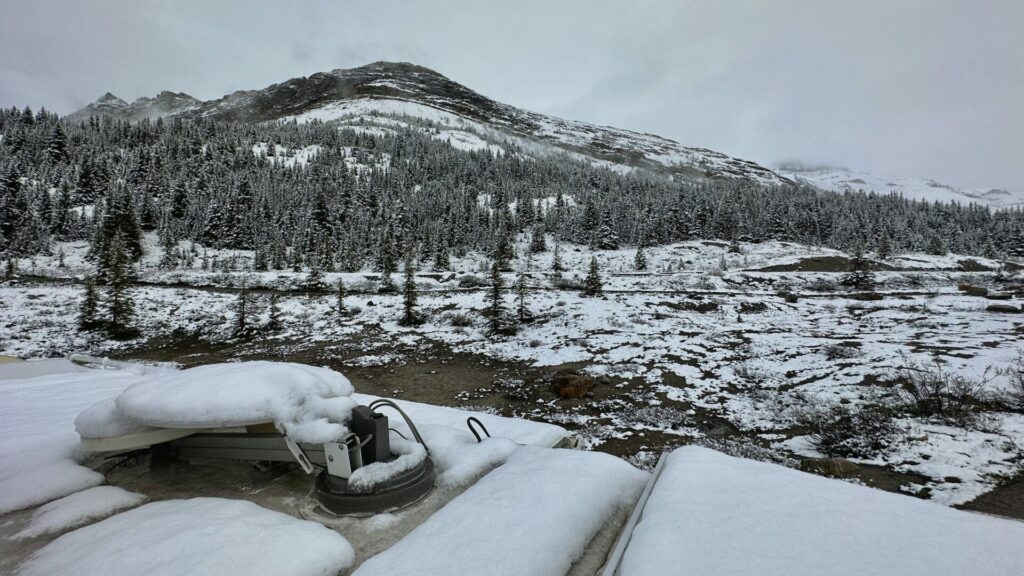
Take on the Cold Weather in One of These Travel Trailers
You don’t have to shiver through winter because you have a travel trailer. These RVs withstand the coldest winter temperatures.
The most important features for finding the best cold weather travel trailer are insulation, heat, and safety.
Take the time to prepare your RV for the elements, and you’ll have no trouble staying warm all winter.
Depending on how you enjoy spending your time outside, you may fall in love with winter camping.






